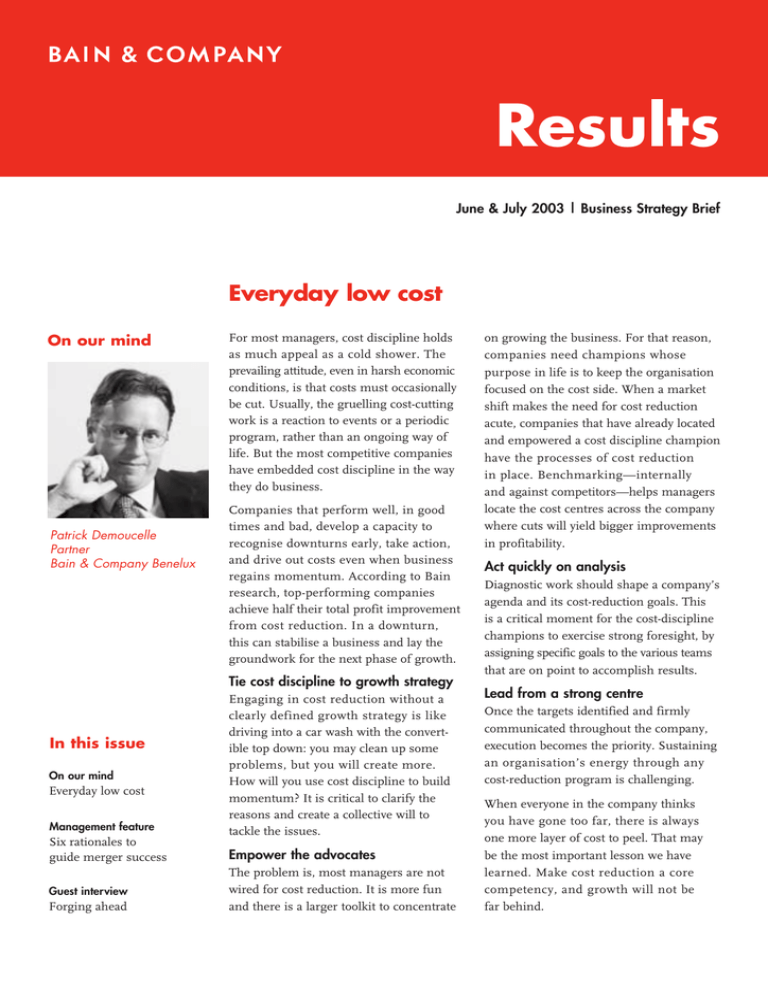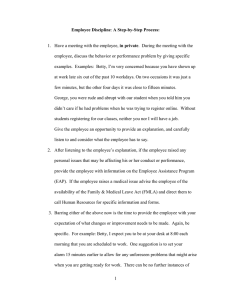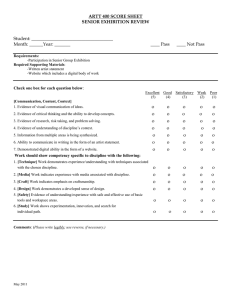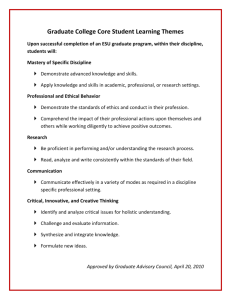Results Everyday low cost On our mind
advertisement

Results June & July 2003 | Business Strategy Brief Everyday low cost On our mind Patrick Demoucelle Partner Bain & Company Benelux For most managers, cost discipline holds as much appeal as a cold shower. The prevailing attitude, even in harsh economic conditions, is that costs must occasionally be cut. Usually, the gruelling cost-cutting work is a reaction to events or a periodic program, rather than an ongoing way of life. But the most competitive companies have embedded cost discipline in the way they do business. Companies that perform well, in good times and bad, develop a capacity to recognise downturns early, take action, and drive out costs even when business regains momentum. According to Bain research, top-performing companies achieve half their total profit improvement from cost reduction. In a downturn, this can stabilise a business and lay the groundwork for the next phase of growth. Tie cost discipline to growth strategy In this issue On our mind Everyday low cost Management feature Six rationales to guide merger success Guest interview Forging ahead Engaging in cost reduction without a clearly defined growth strategy is like driving into a car wash with the convertible top down: you may clean up some problems, but you will create more. How will you use cost discipline to build momentum? It is critical to clarify the reasons and create a collective will to tackle the issues. Empower the advocates The problem is, most managers are not wired for cost reduction. It is more fun and there is a larger toolkit to concentrate on growing the business. For that reason, companies need champions whose purpose in life is to keep the organisation focused on the cost side. When a market shift makes the need for cost reduction acute, companies that have already located and empowered a cost discipline champion have the processes of cost reduction in place. Benchmarking—internally and against competitors—helps managers locate the cost centres across the company where cuts will yield bigger improvements in profitability. Act quickly on analysis Diagnostic work should shape a company’s agenda and its cost-reduction goals. This is a critical moment for the cost-discipline champions to exercise strong foresight, by assigning specific goals to the various teams that are on point to accomplish results. Lead from a strong centre Once the targets identified and firmly communicated throughout the company, execution becomes the priority. Sustaining an organisation’s energy through any cost-reduction program is challenging. When everyone in the company thinks you have gone too far, there is always one more layer of cost to peel. That may be the most important lesson we have learned. Make cost reduction a core competency, and growth will not be far behind.






